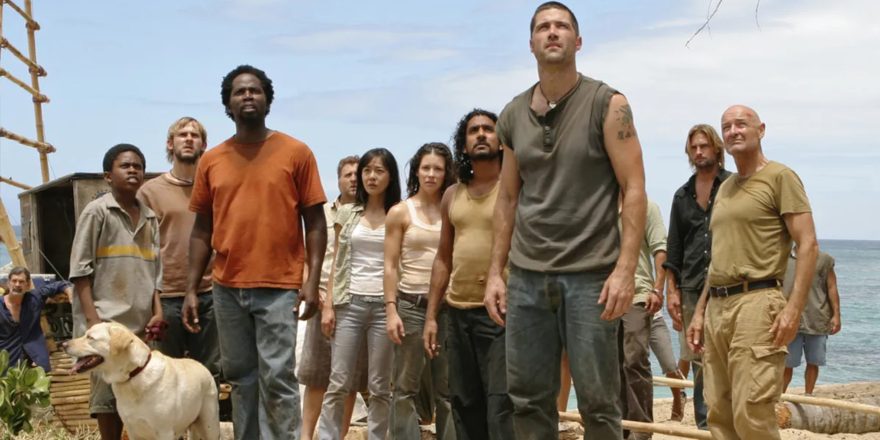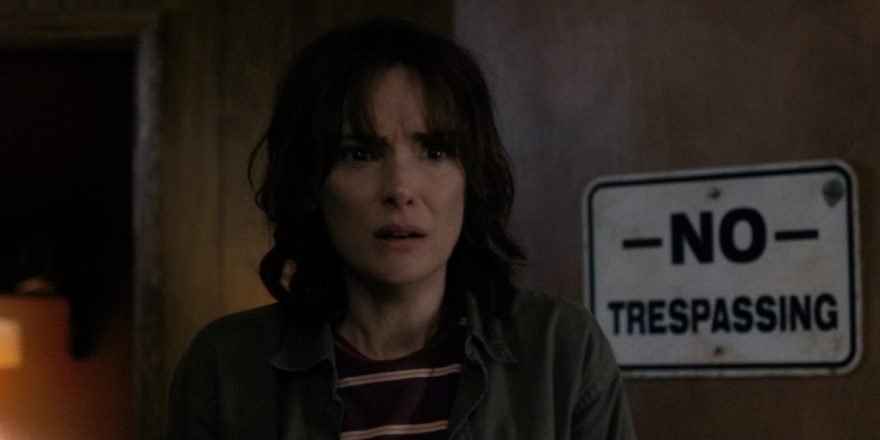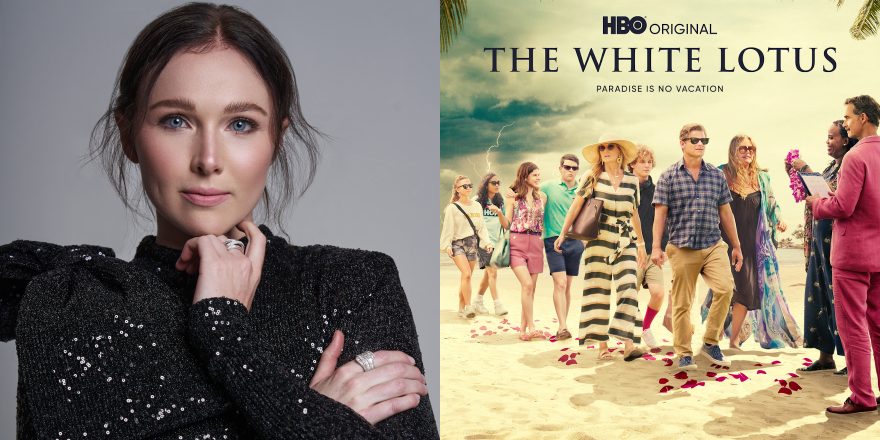When chronicling the history of this Golden Age of Television, many critics reference highly esteemed, “prestige” series like The Sopranos, The Wire, Mad Men and Breaking Bad. These are all important and influential shows, no doubt, but their impact is dwarfed next to the true patriarch of today’s episodic storytelling, a show whose narrative innovations now dominate the form of the streaming era. Unfortunately, I’m talking about Lost.
In the mid 2000s, showrunners J.J. Abrams and Damon Lindelof wagered that a bizarre and seemingly inexplicable mystery would keep viewers glued to their TVs, savoring every little morsel of information that (they thought) inched them towards an explanation. Of course, even an onion the size of an island can only have so many layers, so to prolong the peeling, they made extensive use of flashbacks, then flashforwards and even flashsideways. Every week, audiences tuned in, desperate for clues that would solve the riddle, but were instead served hours and hours of tangents that, while sometimes well-written, made little progress towards the grand answers they craved. After a few seasons of this, a gnawing suspicion developed that the writers were deliberately dodging the premise that had hooked their viewers in the first place – a suspicion that was confirmed when the only revelation offered by the final season was that there would be no revelation.
I rode that train to nowhere with millions of other viewers, and despite the occasional thrill, I cannot look back at those memories fondly, because I had given my time for a promise that was never intended to be fulfilled. As a writer of Lost allegedly admitted, “We literally just think of the weirdest most fucked up thing and write it and we’re never going to pay it off.” The relationship between creator and audience was founded on deceit.
Most viewers felt the same way, and yet the numbers were too good to ignore. Subsequent shows copied Lost’s flashback structure, like Orange is the New Black, How I Met Your Mother, Scandal and Once Upon a Time. Meanwhile, Breaking Bad popularized the in media res technique of starting each season with a preview of the dramatic finale, before rewinding back to the present to explain how we got there – a trick that felt innovative at the time, but is now so common as to seem obligatory, from Alias to The Queen’s Gambit to The Dropout to She-Hulk… to be honest, it would be faster to list the shows that don’t employ it.

As effective as this tactic can be, it always carries the whiff of fear – fear of impatient audiences with short attention spans. Netflix’s Bloodlines replayed its bloody climax again and again over the first season, a repetitive series of flashforwards that seemed to serve no other purpose than to reassure the most restless viewers that the show will eventually “get good.” As Mike White depressingly said about his hit HBO series White Lotus: “…had I only known if I’d put a dead body at the beginning of Enlightened, maybe people would’ve watched Enlightened …”
As flashbacks encroached from the past and in media res from the future, they eventually coalesced into the now ubiquitous trope of multiple timelines. Once relegated to mind-bending sci-fi like Outlander, Dark and Westworld, multiple timelines are now universally applicable, from apocalyptic thrillers like Station Eleven, family dramas like This Is Us, comedies like Made for Love, and true crime stories like The Staircase, which bounces dizzyingly between no fewer than four timelines in one season.
What’s confounding about this obsession with shuffled timelines is that when the rare TV show tells its story from beginning to end, audiences have no trouble enjoying it. Except for one crucial flashback, both the original Game of Thrones and its spinoff House of the Dragon unfurl in strict chronological order. And the South Korean mega-hit Squid Game opens with an ordinary guy down on his luck for a full 45 minutes without the slightest hint of the colorfully violent world in store – a choice that is almost impossible to imagine an American showrunner being allowed to make.
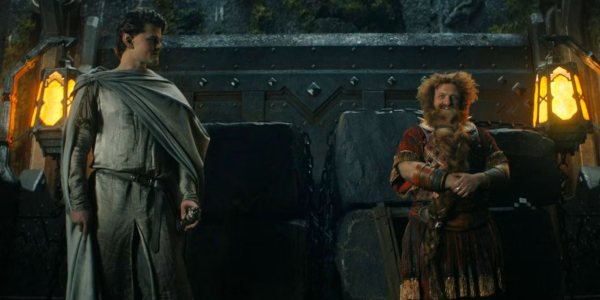
Despite the backlash, Lost’s other great contribution to episodic storytelling, the mystery box, is still being shaken by audiences to guess its contents. The internet is awash in fan theories around Showtime’s Yellowjackets (which also employs in media res and multiple timelines, making it Lost‘s most explicit modern descendant.) The latest season of True Detective may have technically solved the case, but left nearly all of its supernatural subplots unresolved. And both of Amazon’s fantasy adaptations, The Rings of Power and The Wheel of Time, have been criticized for burdening the source material with who-could-it-be secret identities.
But as a narrative device, the mystery box has metastasized into something at once more subtle and widespread. In an early episode of The Rings of Power, Elrond the elf seeks the help of his dear friend the dwarf prince Durin – who angrily exiles Elrond from his kingdom without explanation. After trying several tacks to win back the favor of his former friend, Elrond finally gets around to asking Durin what the audience has been wondering for the past 40 minutes: “Have I offended you?” Durin finally reveals the source of his anger, but what’s perplexing about the scene is why it occurs so late. Why doesn’t Elrond ask this question immediately? And, more importantly, why deny the viewer the context of the dilemma until just before it’s resolved? Wouldn’t the drama have been more effective if we could have empathized with Durin’s hurt and Elrond’s guilt?
Modern television is peppered with such “extraneous mysteries,” small, deliberate obfuscations that frustrate the audience’s comprehension. Netflix’s Beef begins with Steven Yeun angrily trying to return a truckful of hibachi grills to a home improvement store – the purpose of which we’ll find out later. In the same episode, he binge-eats chicken sandwiches until he retches – a bizarre ritual that is only (kind of) explained in episode four – and has confrontations with two different relatives that vaguely reference some past family tragedy, which, again, will not be clarified for a long time.
In True Detective: Night Country, the contentious history between the two main characters is repeatedly hinted at before being finally revealed at about the midpoint of the series. The Haunting of Hill House features a quartet of siblings scarred by a supernatural experience from their childhood – but you’ll have to watch hours of multiple timelines to find out what it was. And the premiere of White Lotus‘s second season is bookended with a pointless whodunit about which of the new guests has hired a prostitute. (In one of the least surprising twists ever, it turns out to be the middle-aged Hollywood producer.)
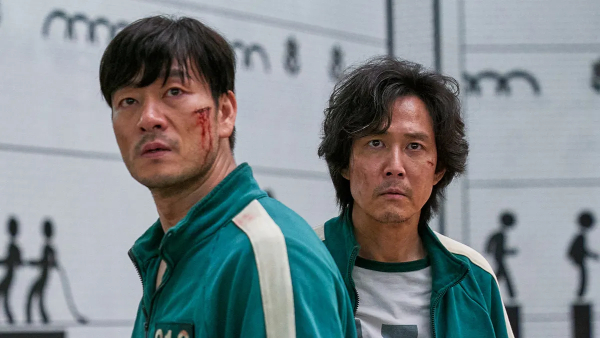
What makes all these “mysteries” extraneous is that they’re not mysteries to the characters – only the viewer. Fundamental details about relationships, motivations and backstories are arbitrarily withheld to create an aura of complexity and intrigue. The missing pieces are constantly rubbed in our faces, as if the frustration is the point. And though they may eventually be revealed, you can’t retroactively enjoy the drama of scenes that were stripped of context. If “dramatic irony” is the pleasure the audience feels from knowing more than the characters, this trend could be called “inverse irony,” where the audience knows less than anyone on screen. The thrill of “What’s going to happen next?” is replaced with the fog of “What the hell is going on?”
I do not believe that any of this makes the writer’s job any easier, or the audience’s experience more enjoyable. Why, then, are mysteries and multiple timelines so ubiquitous in modern television? Perhaps the answer lies in the nature of the format itself.
A common definition of “plot point” is an event that causes the dynamics between the characters to change irrevocably. So when Walter White decides to stop making meth (as he did multiple times over Breaking Bad‘s five seasons) it’s not a particularly strong plot point, because he can (and usually did) change his mind and things soon go back to the way they were. But when his wife Skylar finds out her husband is a drug kingpin, this cannot be undone. Strong, irreversible plot points like Ned Stark’s execution or Kendall Roy’s failed coup are what fans remember about Game of Thrones and Succession for years afterwards. They’re what good stories are made of.
But television shows are not just stories; they’re brands. And the laws of marketing dictate that brands must be reliable, predictable and unchanging. If a showrunner happens to hit upon a recipe that an audience likes the taste of, the corporate owners will want to keep the flavor as consistent as possible. Furthermore, as recent shifts in the marketplace have made mid-level movies less financially feasible, many premises and properties originally intended for a 90-minute runtime are stretched out over a dozen hours or more. With “minutes watched” being the new metric of success, TV writers face a tough challenge: How do you keep a story running in place for as long as possible while making the audience feel as if they’re getting somewhere?
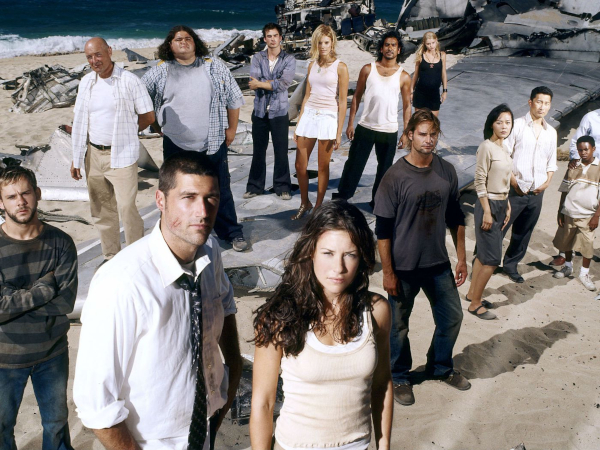
Mysteries and multiple timelines are the twin solutions to this dilemma. With each timeline shift, the characters appear in different locations and states of mind, which gives the illusion of change – even though no plot points have occurred. The withholding and revealing of crucial information creates a sense of transformation – but it is not the characters that have changed, only our understanding of them.
These tactics are not new, and they can be effective at establishing tone, but it comes at a steep cost to the drama. With each timeline shift, dramatic momentum is reset and the audience’s engagement must be rebuilt anew. Extraneous mysteries may create a “curiosity gap” (to borrow the parlance of algorithmically fueled online platforms), but hamper our ability to understand and empathize with the characters.
Of course, narrative forms are always evolving, and part of a writer’s job is to balance exposition with ambiguity. No narrative technique is intrinsically good or bad, but they can certainly be overused. And once you start looking for it, the DNA of Lost is everywhere. This is a massive shift in how we tell stories, and yet it’s occurred without much notice from audiences, critics, and perhaps even the writers themselves. The result may be an increase in minutes watched, but it’s making audiences less interactive and more reactive. Without the ability to judge motivations, track cause and effect and predict possible futures, viewers detach intellectually and just let the content “wash over them” – a popular phrase for describing modern cultural consumption.
I believe that stories teach us how to interpret the world and each other, and I wonder, is this what we should be learning? That people are unknowable and things happen for no reason? Beyond a general revulsion that algorithmic imperatives have warped narrative structure, I fear that a generation raised on this storytelling approach will take these lessons into real life, throw up their hands at trying to understand each other, give up predicting how one thing can lead to another, and just let the events of the world wash over them.


